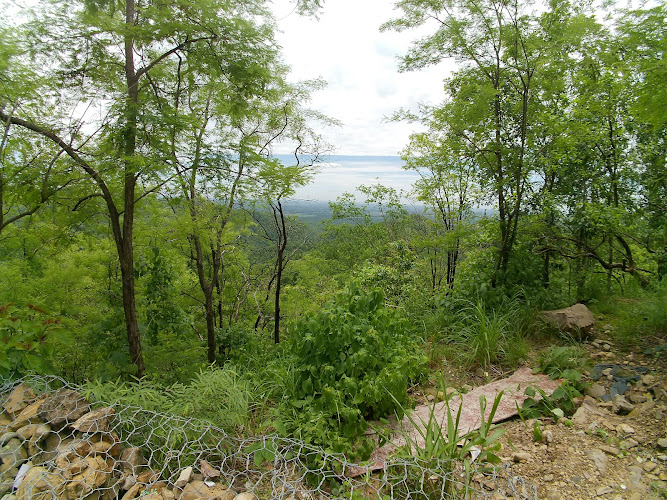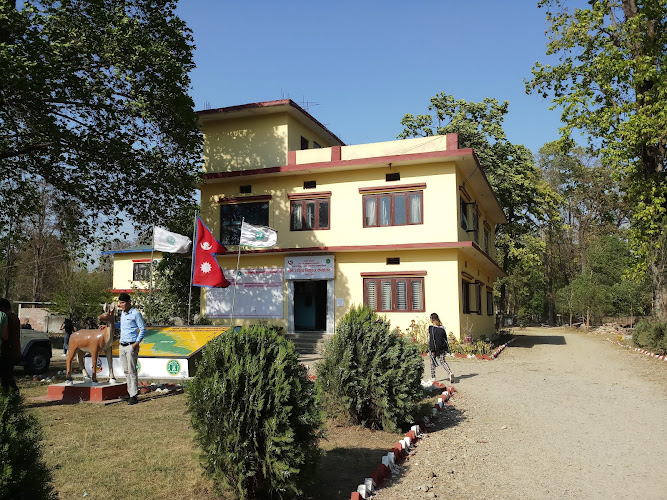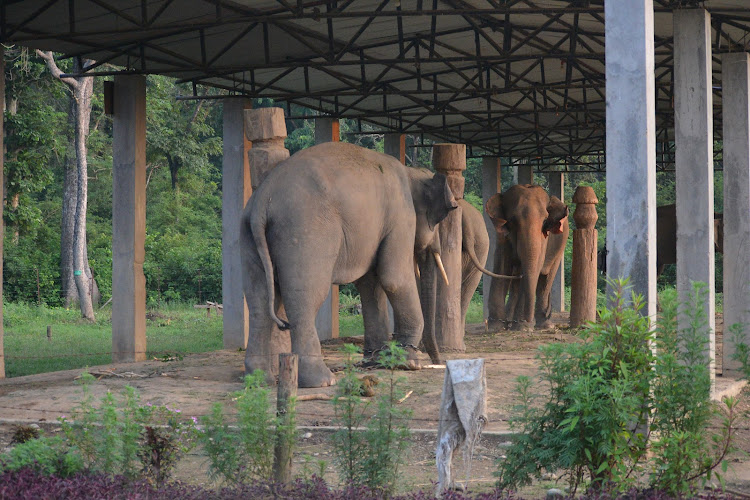



BANKE NATIONAL PARK - Tiger Corridor & Meta-Population Conservation Landscape
Banke, 21904
In 2010, Nepal created its newest national park not primarily for wildlife already thriving but for wildlife that needed room to move. Banke National Park, covering 550 square kilometers of sal forests and grasslands adjacent to Bardiya National Park's eastern boundary, filled a critical gap in the Terai Arc Landscape—a transboundary conservation corridor stretching from Nepal's Bagmati River to India's Yamuna River across 49,500 square kilometers. By connecting Bardiya with Katarniaghat Wildlife Sanctuary across the Indian border, Banke transformed isolated protected areas into a functional meta-population where tigers, elephants, and other wide-ranging species could disperse, breed, and maintain genetic diversity essential for long-term survival.
The tiger numbers validate this corridor strategy spectacularly. When Banke achieved national park status in 2010, just four tigers inhabited its forests. The 2013 national survey still counted only four. But by 2018, that number had surged to 21 tigers, a 425% increase driven by immigration from Bardiya and successful breeding by resident tigers. Combined with Bardiya's 87 tigers, the Bardiya-Banke Complex harbors 108 tigers—Nepal's largest contiguous tiger population and a critical stronghold in the global effort to save this endangered predator. The 2022 goal of doubling Nepal's tiger population succeeded partly because Banke provided exactly the kind of habitat expansion and connectivity that tiger biology demands.
Wildlife corridors function as highways for species whose territories span dozens of kilometers. Radio-collared tigers tracked through Banke reveal movement patterns between Nepal and India, with 11 individuals documented using corridors connecting transboundary protected areas. These corridors—typically forest and community forest patches threading between agricultural lands—allow genetic exchange between populations that would otherwise inbreed and decline. For elephants, corridors prove equally vital, enabling seasonal migrations following ancient routes to water sources and feeding grounds. Banke protects segments of these critical pathways, making it far more valuable than its modest size suggests.
The park's ecosystems mirror Bardiya's though in slightly smaller scale. Sal forests dominate the landscape, their towering trunks and dense canopy supporting communities of herbivores including spotted deer, barking deer, and wild boar. Grasslands interspersed with forest provide habitat for hog deer and the occasional swamp deer wandering from Bardiya's populations. The Rapti River forms part of the southern boundary, its banks supporting gharial and mugger crocodiles, Gangetic dolphins, and diverse fish populations that feed larger predators.
Beyond tigers, Banke's carnivore guild includes leopards, jungle cats, fishing cats adapted to wetland hunting, sloth bears that tear apart termite mounds with powerful claws, and jackals that scavenge tiger kills and hunt small prey independently. This predator diversity indicates healthy prey populations and intact ecosystems functioning as they did before human activities fragmented the Terai into isolated habitat patches.
The Terai Arc Landscape strategy that guided Banke's establishment represents twenty-first-century conservation thinking—managing not individual protected areas but entire landscapes including the matrix of agricultural lands, community forests, and wildlife corridors between core zones. This approach recognizes that parks alone cannot sustain viable populations of wide-ranging species; instead, conservation must embrace entire ecosystems including human-dominated landscapes where wildlife and people coexist.
Buffer zone communities around Banke participated in planning processes that established the park, though not without tensions. Families that used these forests for grazing, fuelwood, and non-timber products faced new restrictions when the area gained protected status. Compensation mechanisms and community forestry programs aim to balance conservation with livelihood needs, though implementation challenges persist. Human-wildlife conflict simmers as tigers occasionally kill livestock and elephants raid crops, requiring electric fencing, guard posts, and compensation funds that never quite match the actual losses suffered by subsistence farmers.
Visitor infrastructure remains minimal compared to Bardiya's developed facilities. Most tourists visiting the region base themselves in Bardiya and experience Banke only incidentally during jeep safaris that cross the boundary between the parks. This suits Banke's primary purpose as wildlife corridor and habitat expansion rather than tourism destination. Park headquarters near Kohalpur provides administrative oversight, while ranger posts scattered through the forest conduct anti-poaching patrols and monitor wildlife populations.
Research and monitoring form critical components of Banke's management. Camera trap surveys document tigers, leopards, and prey species while tracking population trends. Radio-collaring programs reveal movement patterns and corridor usage. Ecological studies assess habitat quality and identify areas needing restoration or protection. This data-driven approach allows adaptive management where policies adjust based on what actually works rather than assumptions about what should work.
Banke National Park won't attract tourist crowds the way Chitwan or even Bardiya do. It lacks luxury lodges, established jeep tracks, and the concentrated wildlife viewing that drives tourism revenues. But its value operates on different metrics—genetic connectivity between tiger populations, functional corridors allowing elephant migrations, forest blocks large enough to support complete predator-prey communities. In the long calculus of conservation, Banke may ultimately prove more important than more famous parks precisely because it provides the connective tissue that transforms isolated habitat islands into functional landscapes where wildlife persists not merely survives.
Park Features & Amenities
🏗️ Amenities
- ✓ Public toilet
🎠 Children
- ✓ Good for kids
🐕 Pets
- ✓ Dogs allowed
Visitor Information
🕐 Best Times to Visit
Spring (Mar-May): Pleasant weather, blooming flowers
Autumn (Sep-Nov): Clear skies, comfortable temperatures
Early Morning: Best for wildlife viewing and photography
🗺️ Getting There
By Car: Banke, 21904
Public Transport: Local buses and taxis available
Walking: Check distance from city center
💡 Visitor Tips
• Bring water and sun protection
• Wear comfortable walking shoes
• Check weather conditions before visiting
• Bring camera for nature photography
Explore More in Nepal
Nearby Attractions
Popular Activities
Ready to Visit BANKE NATIONAL PARK?
Plan your visit to this amazing destination with our comprehensive travel guide and insider tips.
Seasonal Travel Guide
Weather & Best Time
Winter brings cool temperatures (5-15°C) with clear skies and snow-capped peaks. Perfect for mountain views but cold at higher altitudes.
Best Activities:
- Mountain viewing
- Cultural experiences
- Spa and hot springs
- Photography of snow peaks
- Indoor cultural activities
Travel Tips
- Visit during December-February for snow-capped views
- Pack warm clothing for cold temperatures
- Book hotels with heating facilities
- Plan for shorter daylight hours
Packing Suggestions:
- Warm winter clothing
- Thermal layers
- Warm hat and gloves
- Sturdy winter boots
- Hot water bottle
Quick Facts
Best time: Autumn (Sep-Nov)
Duration: 1-3 days
Difficulty: Easy
Cost: Budget-friendly